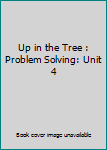Up in the Tree : Problem Solving: Unit 4
Select Format
Select Condition 
Book Overview
No Synopsis Available.
Format:Spiral-bound
Language:English
ISBN:0990993256
ISBN13:9780990993254
Release Date:February 2014
Publisher:Sanford Harmony Program
Related Subjects
Computer Design Computer Science Computers Computers & Technology Design & Architecture Education & Reference Mathematics Microprocessors & System Design Science & Math Software Software Design & Engineering Software Design, Testing & Engineering Software Development Software EngineeringCustomer Reviews
6 customer ratings | 5 reviews
There are currently no reviews. Be the first to review this work.





















